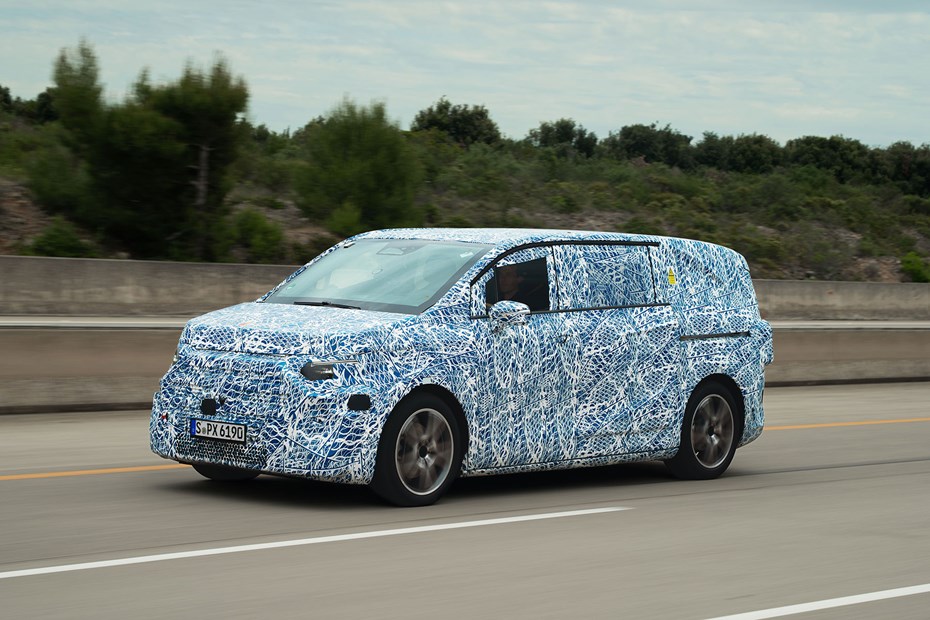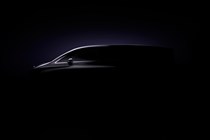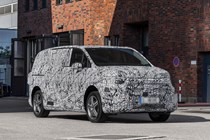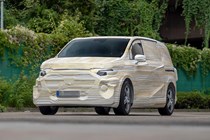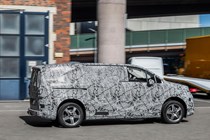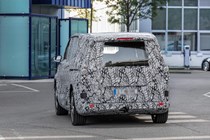Mercedes-Benz is taking a roundabout approach to revealing its all-new electric van range, having shown off prototypes of the people-carrying version that is expected to be much the same shape and design as the van model. The passenger-transporting VLE is set to be the first to go on sale, with the all-new Vito due to follow.
Mercedes will be switching all of its medium and large vans onto a new electric platform called VAN EA, which stands for Mercedes-Benz Van Electric Architecture. This platform is set to form the basis of the new eVito medium van and eSprinter large van, and will be used for commercial and the passenger vehicles such as the new VLE.
It is scalable and modular, meaning that the same underpinnings can be used for a wide range of different sizes and shapes of vehicle, ranging from commercial panel vans up to highly-equipped and luxury people carriers.
Mercedes has been releasing images and testing information for the VLE, having undertaken a long-distance 1,090km (677 miles) testing drive from Stuttgart to Rome, with only two 15-minute charging stops on the way. The drive took 13 hours and Merc said that it approached it in a representative manner with the air conditioning being set to 22 degrees throughout.
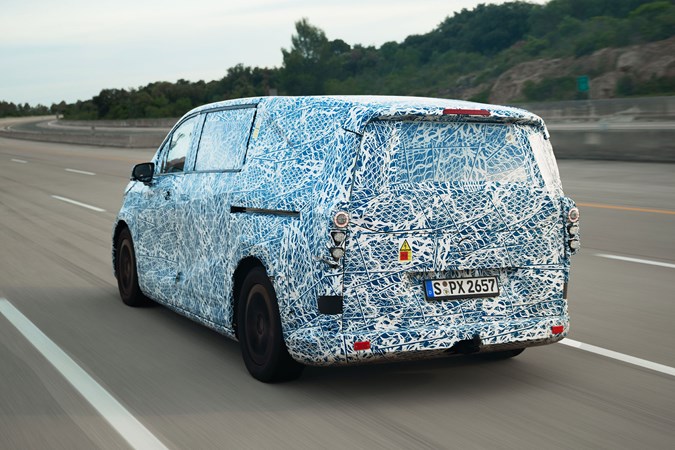
The images show a heavily camouflaged van that features a set of large alloy wheels and glazed second row windows. There is a strong fold line where a third row of windows would be that could make it to the van, although it might be that things are pared down for the commercial version. It has also shown off its work in the wind tunnel, illustrating the vehicle’s aerodynamics. While Mercedes has claimed an ‘impressive drag coefficient’ and ‘outstanding’ efficiency, it has yet to put any figures to that.
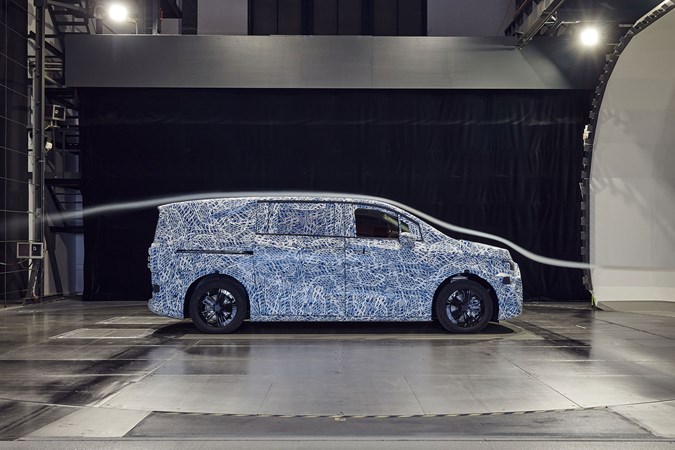
Mercedes has also confirmed that the VLE features rear-axle steering, which benefited its manoeuvrability around tight Italian towns and on winding mountain roads. Before you get excited about the prospect of a van with rear-wheel steering, Mercedes has also said that the new VAN EA architecture will allow for a ‘clear differentiation’ between the high-end passenger vehicles and the commercial transporters. Shame.
Previous testing has seen the vehicle undertake a long-distance trip from Mercedes’ home city of Stuttgart in Germany to North Cape at the northern tip of Norway, a journey of more than 2,000 miles. The test vehicle was created to assess the chassis, electric powertrain, battery and high-voltage components.
The plan is to launch the passenger versions first, with the vans following on. This means that the relatively recently updated Mercedes eSprinter and eVito will remain on sale after the first VAN EA passenger vehicles are available.
What do we know about the first VAN EA vehicles?
Mercedes has confirmed that all versions of the new VAN EA commercial vehicles will come equipped with the latest version of the brand’s operating system as well as high-speed charging as standard. It has also suggested that front-wheel drive and all-wheel drive will both be available.
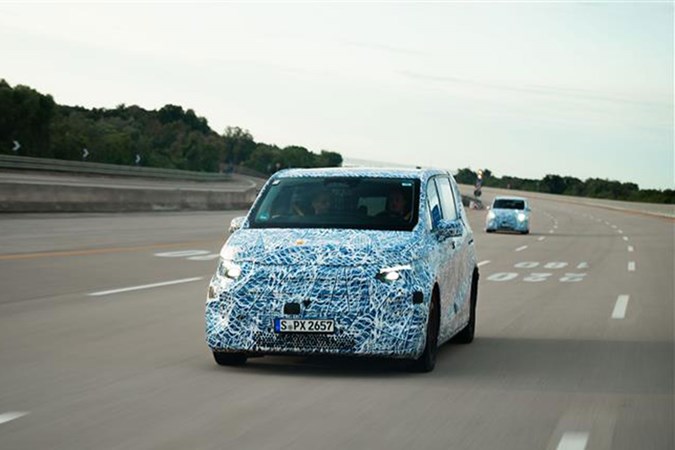
Mercedes has previously told Parkers that the new vehicles are not simply like-for-like replacements for the Vito and Sprinter – they are purpose-built battery electric vehicles for example, so there is no chance of them being offered with a diesel engine. The brand has also ruled out hydrogen as an option.
With the most recent eSprinter, Mercedes said it had done all it could in terms of maximising efficiency, and has targeted several key areas for improvement that VAN EA could bring about. These include aerodynamics, the efficiency of the drivetrain and the heating system. VAN EA will use heat pumps for example, which are more suitable to an electric vehicle, Mercedes says.
The brand is yet to be drawn on what sort of range is possible, but has previously said that it would be a ‘huge increase’ over the current eSprinter’s 275-mile maximum. It also pointed to huge potential improvements in charging time, which would further spread its usability by reducing the amount of time the van has to spend off the road plugged in.
Bosses think that range is ultimately less of a headline priority for van users, with total cost of ownership a more important factor.
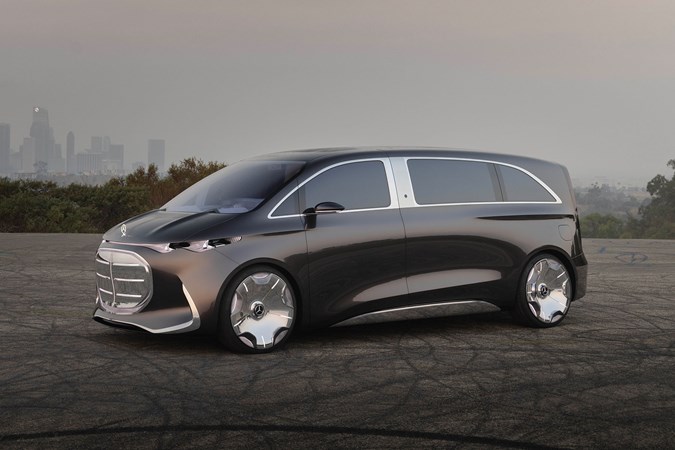
Mercedes has also shown off a Vision V concept, which has been shown in Shanghai and at Pebble Beach in Los Angeles. This highlights what the top-end VLS limousine could offer, featuring a 65-inch retractable cinema screen that is stored under the floor, a 42-speaker surround-sound system and seven projectors.
When will the first VAN EA vehicles launch?
The medium-sized passenger vehicle is set to be the first to launch – an all-electric take on the V-Class – but the panel van versions are expected to follow shortly afterwards. This could be less than a year later, meaning the first panel van models might well be on sale as soon as 2027.
The platform is designed to only sit under the medium and large vehicles, though – the small Citan van will continue to be made as part of the brand’s partnership with Renault.
Just so you know, we may receive a commission or other compensation from the links on this website - read why you should trust us.


